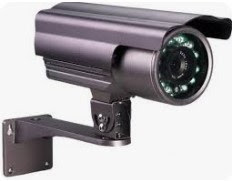Troubleshooting CCTV HD cameras can involve several steps to identify and resolve issues. Here's a general guide:
i. Power Supply: Ensure that
the camera is receiving power. Check the power adapter, cables, and
connections. Sometimes power issues can arise from faulty adapters or loose
connections.
ii. Camera Connection: Make sure
the camera is properly connected to the DVR or NVR. Check the cables and
connectors for any damage or looseness.
iii. Network Connectivity: If the
camera is IPbased, ensure it's connected to the network properly. Check network
cables, switches, and routers. You may need to check IP addresses and network
settings to ensure proper communication.
iv. Camera Positioning and Lens: Check the
camera's positioning and lens for any obstructions or misalignment. Adjust the
camera angle or focus if necessary.
v. Image Quality: If the image
quality is poor or distorted, check for any environmental factors such as
lighting conditions or reflections that may be affecting the camera's
performance.
vi. Firmware and Software Updates: Ensure that
the camera's firmware is up to date. Manufacturers often release updates to
address bugs and improve performance.
vii. Resetting the Camera: Sometimes
resetting the camera to its factory defaults can resolve issues. Refer to the
camera's manual for instructions on how to reset it.
viii. Testing with Another Device: Connect the
camera to a different DVR/NVR or monitor to see if the issue persists. This can
help determine whether the problem lies with the camera or the recording
device.
ix. Check DVR/NVR Settings: Make sure
the camera is properly configured in the DVR/NVR settings. Verify that the
correct camera channels are selected and configured.
x. Physical Inspection: If none of
the above steps resolve the issue, physically inspect the camera for any signs
of damage or malfunction. It's possible that the camera may need repair or
replacement.








0 Comments